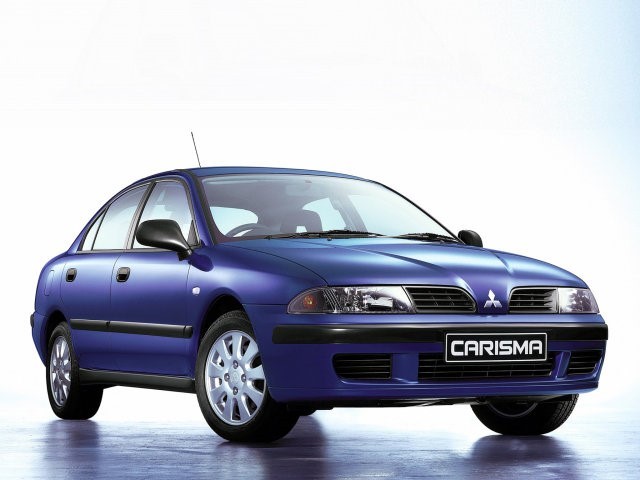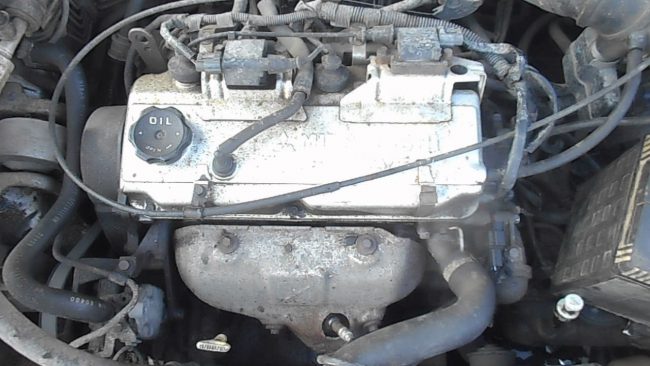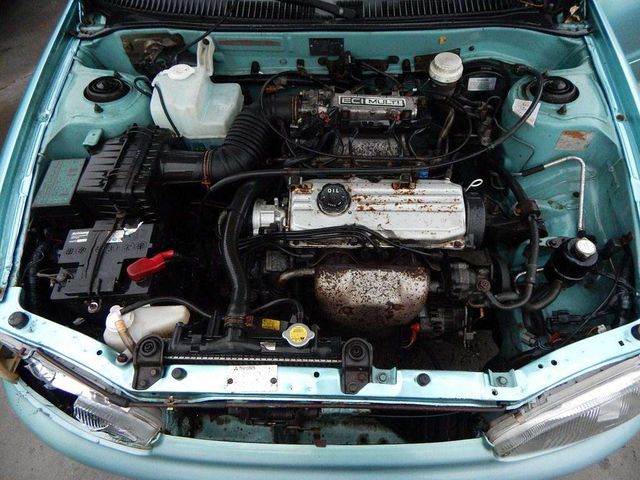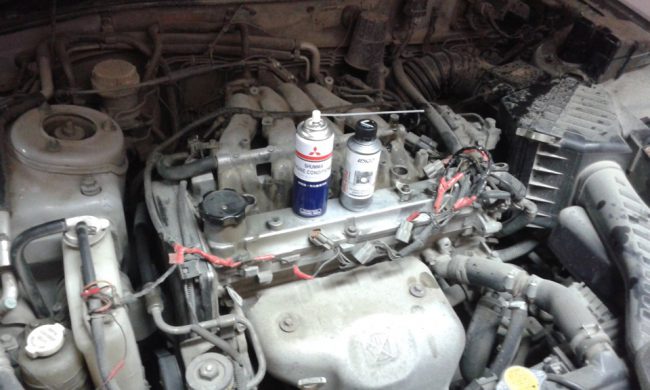
Mitsubishi Carisma engines
Content
The car was first presented to the public in 1995. He was an intermediate link between the Lancer and Galant models. The Dutch plant NedCar, located in the city of Born, produced this model. The end of the production of the car came in 2003.
Two types of bodywork were offered: sedan and hatchback. Both of these bodies were equipped with five doors. Despite the fact that the finishing materials were not expensive, the build quality was at a high level.
Thanks to the logical arrangement of all controls, the driving driver felt very comfortable both when driving within the city limits and over long distances. Passengers located in the front passenger seat, as well as on the back sofa, also feel very comfortable, since the car has a large cabin space.
4G92 engine
The first engine that was installed in this model was the power unit with the 4G92 index, which was produced by Mitsubishi for 20 years. It became the basis for the creation of a large number of modern motors from the 4G line. The 4G92 Power Unit was widely used not only in the Carisma model, but also in other versions of Mitsubishi.
In the first versions of the power unit, a carburetor was present, and the cylinder head was equipped with a single camshaft. The power of the stock engine was 94 hp. Fuel consumption in the combined cycle is 7,4 liters per 100 kilometers.
Subsequently, they began to install a DOHC system, which was equipped with two camshafts and a variable valve timing system called MIVEC. Such an engine is capable of delivering 175 hp.
Service Features 4G92
Engine displacement is 1.6 liters. With proper operation and the use of high-quality lubricating and fuel fluids, a car's life can exceed a decoupling of 250 thousand km. Like all engines from the 4G range, an oil change must be done every 10 thousand km. This interval is regulated by the manufacturer, however, many advise replacing oil fluids and filter elements every 8 thousand km. to increase engine life.
 The first version of the engine was not equipped with hydraulic compensators. It is necessary to adjust the valve system every 50 thousand km. The drive belt must be replaced after a run of 90 thousand km. The replacement of this element must be approached responsibly, since a broken timing belt can lead to bending of the valves.
The first version of the engine was not equipped with hydraulic compensators. It is necessary to adjust the valve system every 50 thousand km. The drive belt must be replaced after a run of 90 thousand km. The replacement of this element must be approached responsibly, since a broken timing belt can lead to bending of the valves.
The main malfunctions of 4G92 engines:
- A faulty idle speed control can cause the car to stall when hot. The solution is to replace this regulator, it cannot be repaired.
- An increased rate of oil consumption is due to soot. To eliminate this problem, it is necessary to resort to the engine decoking procedure.
- A cold knock occurs when the hydraulic compensators fail. In this case, it is necessary to replace the failed parts.
- Also, due to soot on the walls of the intake manifold, candles can be filled. To solve the problem, it is necessary to clean the contaminated surfaces.
Based on this power unit, the 4G93 engine was built. It differs only in the increased piston stroke. Instead of the previous 77.5 mm, this figure is now 89 mm. As a result, the height of the cylinder block from 243,5 mm to 263,5 mm. The volume of this engine was 1.8 liters.
In 1997, modified 1.8-liter engines began to be installed in Carisma cars. They were characterized by extremely low emissions of harmful gases into the environment.
4G13 engine
This motor was also installed in the first versions of Carisma. The engine displacement was only 1.3 liters, and its power did not exceed 73 hp. That is why the dynamic qualities of the car left much to be desired. It was very difficult to sell a copy with this engine under the hood, so the number of 4G13 units produced is much less than 4G92. It is an inline four-cylinder engine, with a piston stroke of 82 mm. The torque indicator is 108 Nm at 3000 rpm.
Fuel consumption in the urban cycle is 8.4 l / 100 km, in the suburban 5.2 l / 100 km, and the mixed one is about 6.4 liters per 100 km. The volume of oil fluid required for normal lubrication of all engine elements is 3.3 liters.
With proper care, the car is able to drive about 250 thousand km without major repairs.
Features of servicing the 4G13 engine
The design of this engine is very simple. The cylinder block is made of cast iron. The cylinder head has 12 or 16 valves mounted on a single camshaft. Due to the lack of hydraulic compensators, the SOHC valve system must be adjusted every 90 thousand km. run. The gas distribution mechanism is driven by a belt element.
It must also be replaced, together with valve adjustment, every 90 thousand km. Just like in more powerful engines, a broken drive belt often leads to bending of the valves. The first generation ignition system was equipped with a carburetor, but a little later, an injection system began to be used in these engines. Due to the fact that protection against increased loads is installed in this engine, and also because of the small volume, this motor has not been tuned.
 This engine did not often fail, but it also has its weak points. Often the idle speed had an increased value. All engines from the 4G1 series had this problem. To solve this problem, it is necessary to replace the throttle valve. In order to prevent this problem from reoccurring in the future, car owners installed third-party products that solved the factory wear problem.
This engine did not often fail, but it also has its weak points. Often the idle speed had an increased value. All engines from the 4G1 series had this problem. To solve this problem, it is necessary to replace the throttle valve. In order to prevent this problem from reoccurring in the future, car owners installed third-party products that solved the factory wear problem.
Also, many were faced with increased engine vibration. The problem has not been clearly resolved. Vibration could come from a malfunction of the engine mount or from an incorrect idle setting of the motor. To clarify the cause, you can use computer diagnostics. The fuel pump on these engines is also a weak point. It is because of its failure that the car stops starting.
With a car mileage of over 200 thousand km. there are problems with increased oil consumption. To eliminate this defect, it is necessary to replace the piston rings or make a major overhaul of the engine.
Engine 4G93 1.8 GDI
This engine appeared in 1999. It has four valves. It has a DOHC direct injection system. Engine specifications: power is 125 hp. at 5500 rpm, the torque indicator is 174 Nm at 3750 rpm. The maximum speed that Mitsubishi Karisma can develop with this power plant is 200 km / h. Fuel consumption in mixed mode is 6.7 liters per 100 kilometers.
 All owners of cars with this engine know that these units require the use of high quality fuel. Also, additives and cleaners, as well as liquids that increase the octane number, cannot be poured into them. Improper operation can lead to immediate failure of the high pressure fuel pump. These engines use diaphragm-type valves, as well as plungers, which are made using high-precision equipment. The designers foresaw possible malfunctions of the fuel system and installed a multi-stage fuel purification system.
All owners of cars with this engine know that these units require the use of high quality fuel. Also, additives and cleaners, as well as liquids that increase the octane number, cannot be poured into them. Improper operation can lead to immediate failure of the high pressure fuel pump. These engines use diaphragm-type valves, as well as plungers, which are made using high-precision equipment. The designers foresaw possible malfunctions of the fuel system and installed a multi-stage fuel purification system.
Diesel engine
This 1.9-liter internal combustion engine is an in-line four-cylinder power unit with a cast-iron cylinder block. This engine number is F8QT. The cylinder head has 8 valves and one camshaft. The belt drives the gas distribution mechanism. Also, the engine does not have hydraulic lifters. Reviews about this motor are not the best, since almost every owner carried out expensive diesel engine repairs.

